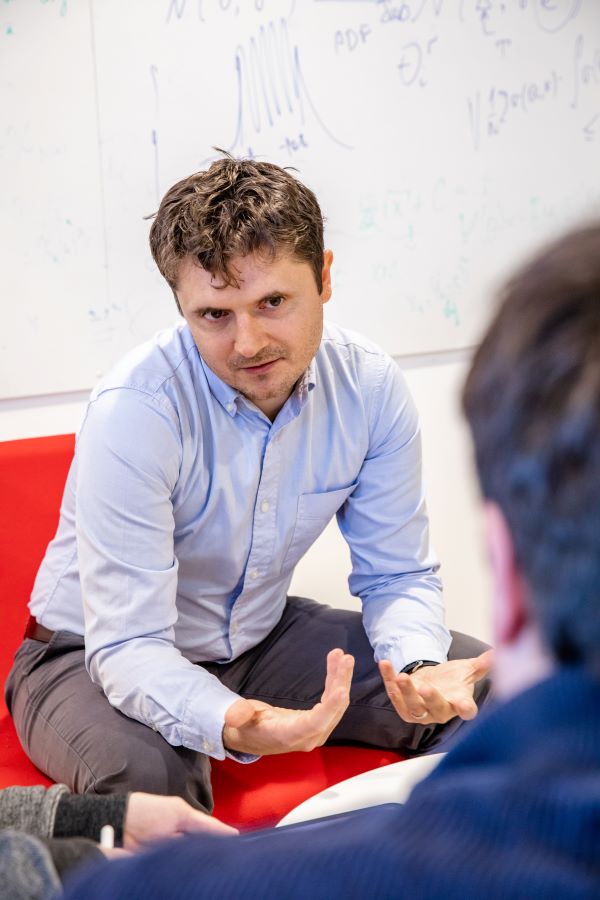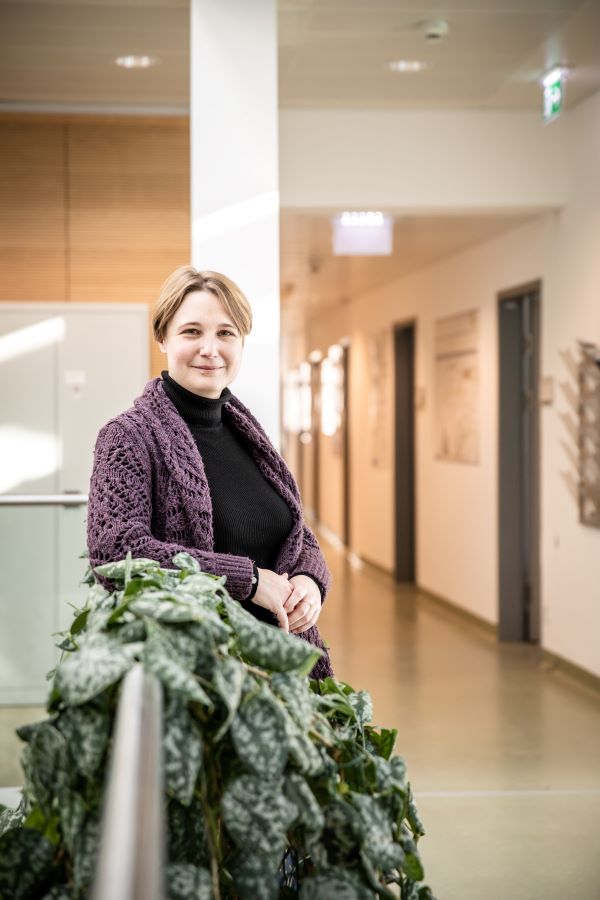January 18, 2024
2+1 ERC Grants for ISTA
Two ERC Proof of Concept Grants and one ERC Consolidator Grant
Using comfortably flickering light against mental health issues, making the training of machine learning models easier and more affordable, and investigating mechanisms and biological functions of germ cells in plants relevant for crop breeding – these are the three research projects for which researchers from the Institute of Science and Technology Austria (ISTA) have recently been awarded two Proof of Concept Grants and one Consolidator Grant by the European Research Council (ERC).
Proof of Concept Grants target research group leaders who have previously received an ERC grant and now want to use up to 1.5 years of time to explore the commercial or societal potential of their work. This is what ISTA professors Sandra Siegert and Dan Alistarh are now doing with their grants worth 150,000 Euros each.
Dan Alistarh – Faster machine learning
Machine learning (ML), a subfield of artificial intelligence (AI), has made tremendous progress over the past decade. Basically, it is a method to make a computer learn from data sets to then generalize and perform certain tasks – without having to manually program algorithms for these tasks. One key requirement for obtaining accurate AI models is to train them over large data sets.

“But that can take significant time,” says ISTA professor Dan Alistarh. “So it makes sense to split the task up and let several computers or processing units work together simultaneously – to complete the computation faster.” Unfortunately, standard distribution methods are not always efficient when applied to machine learning. In his 2018 ERC Starting Grant, he therefore investigated new approaches.
With his just recently awarded ERC Proof of Concept Grant, the Romanian researcher and his team now want to make their approaches available to potential users. “Our techniques reduce the overhead of distributed training of ML models, which can be very high for very large and accurate models. We are now bringing these methods closer to practitioners. We do this by building a software library that allows them to efficiently train large AI models on ‘commodity’ computers.”
In that regard, Alistarh underlines the impact of his research on the ‘democratization’ of AI. So far, training AI models has only been possible for those with a lot of resources, i.e. money and/or access to huge amounts of computing power. “The key motivation behind this work is to enable enthusiasts and researchers to train and run personalized machine learning models on their own, affordable hardware,” he explains.
Sandra Siegert – Light for mental health
Mental health issues, such as post-traumatic stress disorder (PTSD), are a major problem in our society. They not only affect the lives of individuals, but also society as a whole. “The overall societal impact of mental disorders is phenomenal, with approximately 170 billion Euros per year spent on treating mood and anxiety disorders alone,” explains ISTA professor Sandra Siegert. “And this figure does not even take into account the costs of chronic sick leave and early retirement, nor the indirect effects on caregivers and family members, all of which result in an additional massive economic burden.” Common treatments include psychotherapy and pharmacotherapies, i.e. medication.
“However, medication often does not provide the desired improvement in symptoms. For over 70 percent of patients there is no effective treatment,” the neuroscientist explains. One of the main challenges is that some neurons in our brain are wrapped with a protective layer, the so-called perineuronal net, which prevents the neuronal connection from adjusting. This is where research by Siegert and her group at ISTA comes in.

In their research supported by a 2016 ERC Starting Grant, they found that light of a specific frequency stimulates microglia, the macrophages resident in the brain, to temporarily remove this net in mice. As a consequence, the animals’ brains functioned better and they learned faster. The German researcher and her team found that for this to work, the light had to “flicker” 60 times per second – at 60 hertz.
With her new ERC Proof of Concept project, awarded in late 2023, Siegert now wants to explore the potential for humans: “We are interested in applying our concept in a model of posttraumatic stress disorder and translating the results into a drug-free and non-invasive treatment alternative in humans,” states Siegert. Furthermore, the use of “flickering” to treat dementia is also expected to have positive effects. “If properly implemented, this would also be a breakthrough in reducing the risk of cognitive decline and neurodegeneration in later life,” explains the ISTA professor.
Xiaoqi Feng – Consolidator Grant for plant research
Also just a few weeks ago, another ISTA researcher received an ERC grant. Assistant Professor Xiaoqi Feng focuses on epigenetics in germ cells. “Plant germlines are excellent models to address fundamental questions in epigenetics. They are also of great practical significance because they produce the seeds that comprise most of our staple foods,” she explains. With her ERC Consolidator Grant worth 2 million Euro over five years, the plant researcher will investigate the notion of totipotency – evidently a powerful capacity.

Totipotency is the ability of a single cell to divide and produce all kinds of differentiated cells in an organism. “How totipotency is established in germ cells is a fundamental question in reproductive biology. In the male germline of plants, the haploid meiotic products – microspores – are totipotent, which permits crop breeding via microspore embryogenesis,” explains Feng.
However, the molecular basis and biological significance of microspore totipotency are unknown. “Generally speaking, our understanding of plant cell totipotency is still in its infancy,” says Feng. The Chinese researcher and her colleagues will investigate the mechanisms and biological functions of epigenetic reprogramming, which endows totipotency in plant microspores. “Insights derived from our research will not only uncover the molecular basis of cellular totipotency, but also shed light on new strategies to enhance microspore embryogenesis, which has significant economic value in crop breeding,” says Feng.
ISTA: 47% success rate in ERC grant applications
These new grants underline ISTA’s great success in applying for third-party funding, in particular from the ERC. 79% of ISTA professors already have received at least one ERC grant. Including these three new grants, the Institute has already hosted 80 of the prestigious grants by the European Research Council. Since the Institute opened in 2009, an impressive 47% of applications have been successful. For comparison: The average success rate of applications of all research institutions usually ranges between 8 and 15% – depending on the type of ERC frontier grant and the year. The ERC’s 2023 three rounds of Proof of Concept grants, open only to those who already received ERC funding earlier, had a success rate of 43%.



